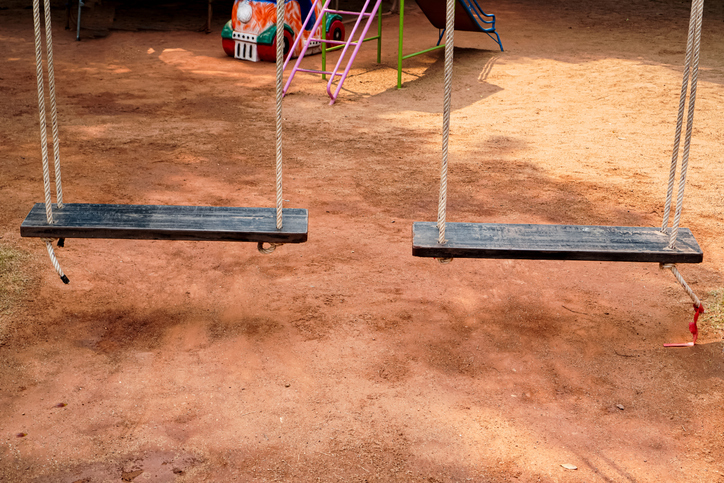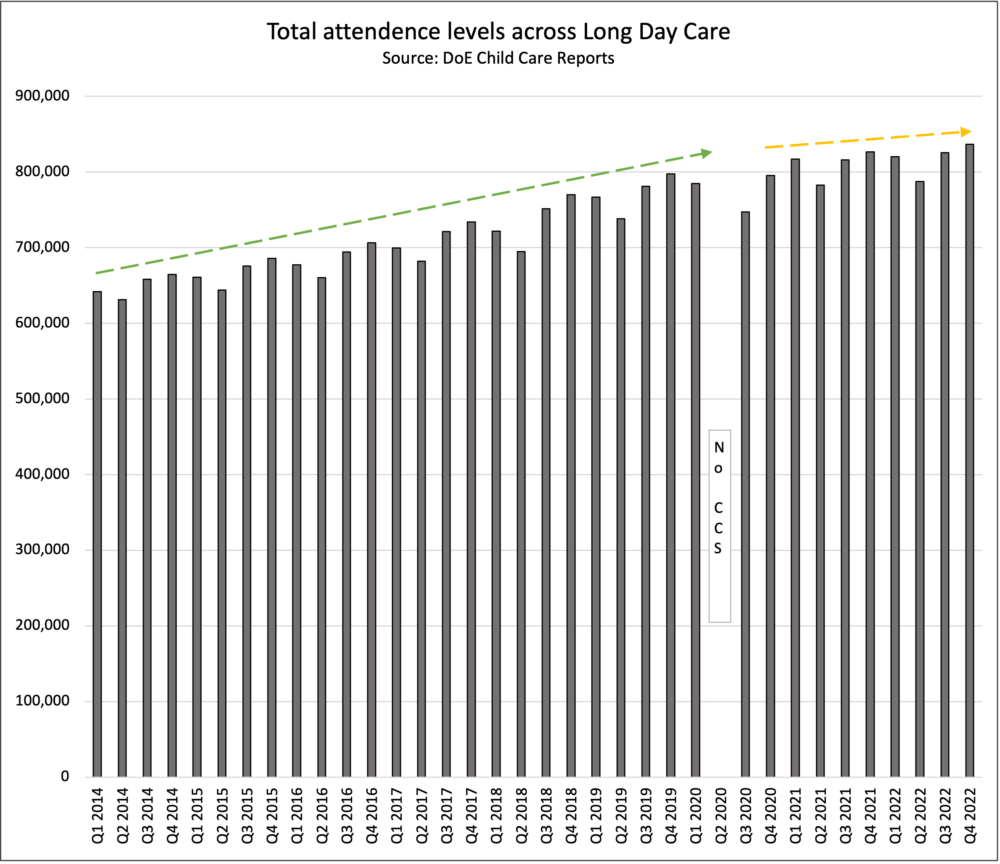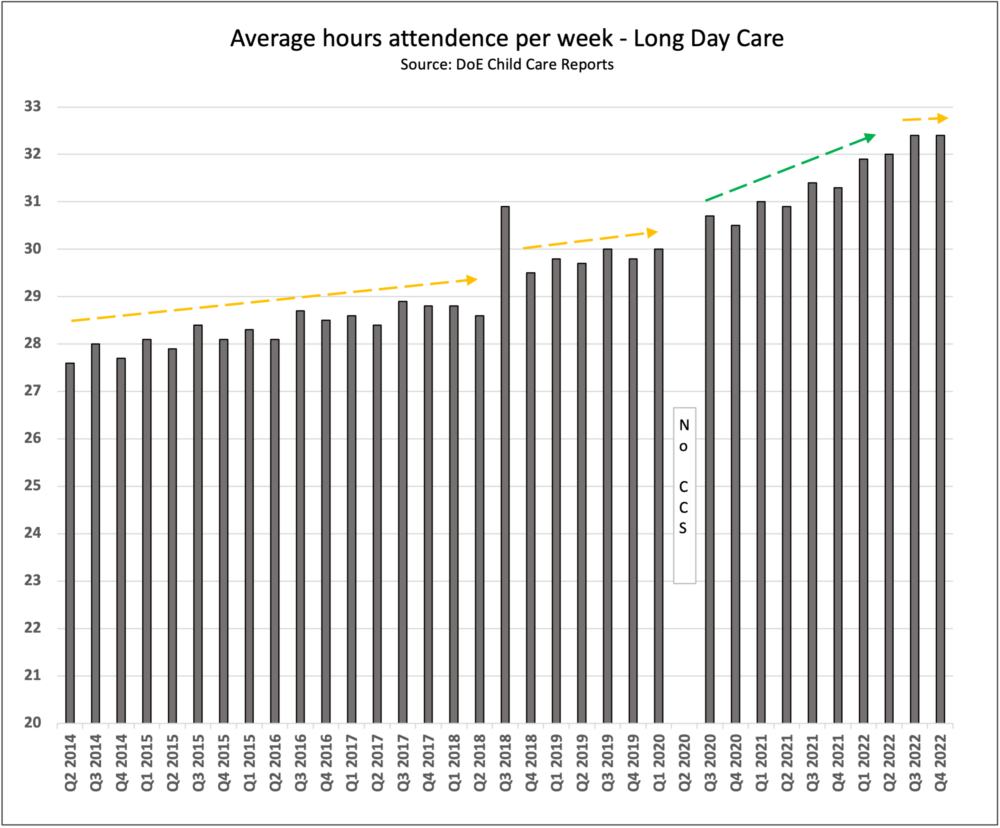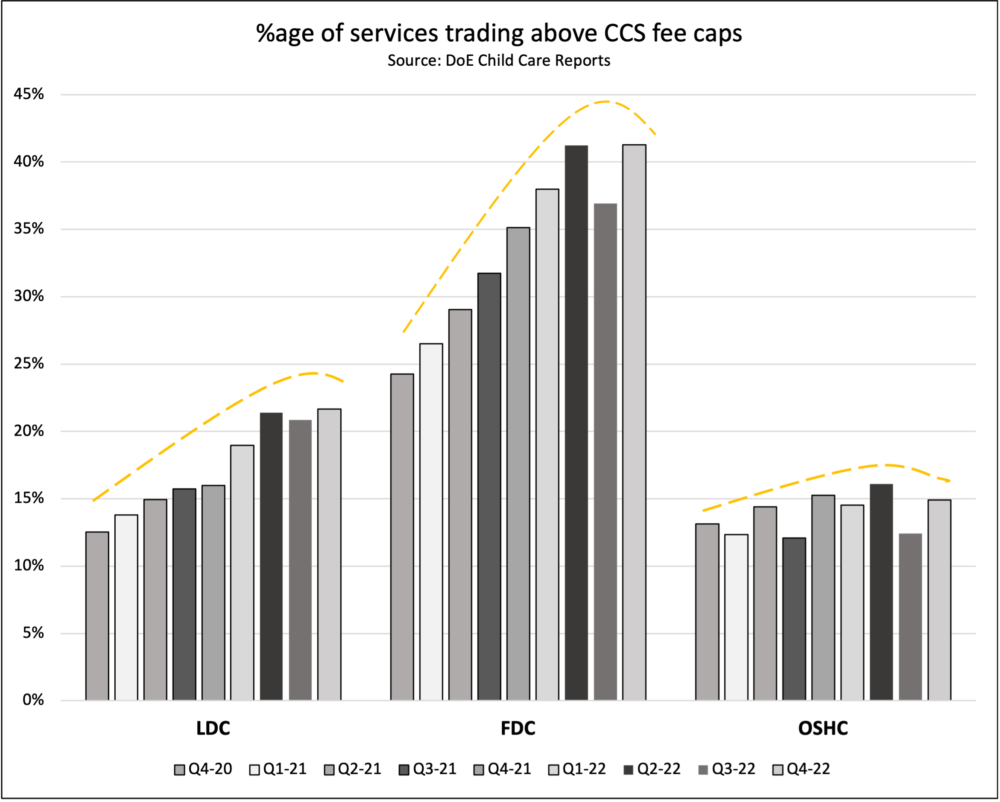LDC attendance growth subdued amidst substantial fee spike says latest Dept of Ed release

The number of children attending a long day care service grew only marginally amidst the largest annualised gross fee increase since 2013 according to the latest release of the Department of Education’s Child Care in Australia report.
The report, which is released quarterly (with a six month time lag), provides a valuable snapshot of key early childhood education and care (ECEC) sector data drawn from the Child Care Subsidy (CCS) administrative systems.
A total of 836,590 children attended an LDC in the December quarter of 2022, 1.3 per cent higher than the previous quarter and 1.2 per cent higher compared to a year earlier. The performance was the fourth consecutive quarter of relatively muted year on year growth, continuing a trend that has been in place since post COVID-19.

Prior to the pandemic the gradient of attendance was steeper over time reflecting faster growth rates than are currently being experienced.
Average hours of attendance in the period were up compared to the same period last year but the same as experienced in the September quarter of last year with children attending on average 32.4 hours over the course of a week.

These patterns of moderation come against the backdrop of a very substantial increase in fees over the course of the three months ended December 2022 with hourly LDC fees jumping 7.3 per cent, the first increase of more than 7.0 per cent since the second quarter of 2013.

Fee increases are very much in the spotlight at the moment given the ACCC’s inquiry into ECEC pricing but jumps of this magnitude, and their timing, are almost certainly linked to surging inflation levels which began to accelerate in earnest half way through last year.
Despite the spike in fees it is notable that the percentage of LDC services with hourly fees above the rate cap of $12.74 was only marginally higher which suggests the bulk of fee increases must be coming from services with fees that were already well below the fee cap.

The fee cap, which is reset every 1 July, is a central part of the CCS system and is designed to act as a disincentive for services to set fees too high above it, as the weight of increases are entirely borne by families.
The backdrop of moderating demand and rising prices illustrated in this latest release provides additional weight for calls for Government support to improve affordability to support demand, which will be met by the upcoming changes to the CCS.
Other notable observations in this release are as follows:
- Outside school hours care (OSHC) attendance was up 13.7 per cent year on year, the second such big jump we have seen and suggestive of a buoyant OSHC sector right now.
- First Nation children attending LDC touched a new record level up 5.7 per cent on the previous year. Family day care (FDC) enrolments were down slightly and OSHC up.
- LDC accounts for 85 per cent of all CCS disbursed and 87 per cent of additional child care subsidy (ACCS)
- Around 40,000 children received some form of ACCS in the quarter, a rate broadly similar to the prior three quarterly periods but below the peak recorded in the post COVID period of 45,000.
To review the Department of Education report click here.
Popular

Policy
Economics
Jobs News
Provider
Workforce
Children’s Services Award changes finalised to address gender-based undervaluation
2025-12-12 06:58:10
by Fiona Alston

Provider
Workforce
Quality
Fair Work Commission confirms forced resignation grounds in case involving early learning provider
2025-12-08 07:30:23
by Fiona Alston

Workforce
Quality
Practice
Provider
Research
How one teacher is using Little J & Big Cuz to build empathy, understanding and confidence in First Nations learning
2025-12-08 07:15:19
by Fiona Alston













